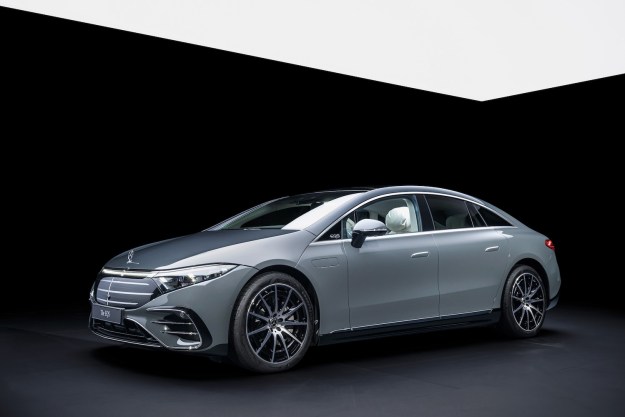The Lightyear One is a five-seat family car powered by solar energy. As if that wasn’t a difficult enough engineering challenge, Dutch startup Lightyear also tried to make the car as aerodynamic as possible, further increasing efficiency. Lightyear claims its creation is the most aerodynamic five-seat car to date.
Lightyear claims to have achieved a drag coefficient (Cd) of 0.20. To put that in perspective, a Tesla Model S has a Cd of 0.23, while a Toyota Prius has a Cd of 0.24 — and those are two of the most aerodynamic conventional cars in production. Getting a lower Cd with four doors and five seats is a major achievement. The Volkswagen XL1 had a lower Cd of 0.19, but that car was a tiny two-seater, with the seats staggered to make the body as narrow as possible. VW ditched practicality in the name of efficiency.
Why is a low drag coefficient good? Drag is the term for the resistance caused by air flowing over the car. The more drag, the more energy it takes to keep the car moving. In the case of an electric car like the Lightyear One, low drag means greater range, since a given amount of energy will be able to propel the car further.
Better aerodynamics came about in part because of the car’s elongated shape, which was needed to house the solar panels, according to Lightyear. The car also has flush wheel covers, and cameras instead of exterior mirrors (which is not legal in the United States). Lightyear also claims its car will be two times more efficient than a conventional electric car relying solely on battery power.
The Lightyear One can still be charged by plugging in, like a regular electric car. But its solar panels can add up to 60 kilometers (37.2 miles) of range, Lightyear claims, without having to stop to plug in. The total range is estimated at 725 km (450.4 mi) on the European testing cycle (which is more lenient than the U.S. test cycle). The car is driven by four electric motors — one for each wheel. Lightyear doesn’t quote horsepower, but claims the car will do zero to 62 mph in 10 seconds. The Lightyear One will also be available with Tesla-style over-the-air software updates, as well as Apple CarPlay and Android Auto.
Lightyear previously said its car would have a base price of $135,000, and the startup is currently taking reservations. The people behind Lightyear have plenty of experience with solar tech (the company was started by veterans of the World Solar Challenge, a race for solar cars) but not experience building and selling cars for customers. That lack of experience can make things difficult enough for startups using proven battery technology, let alone solar power.
While automakers like Hyundai and Toyota have used roof-mounted solar panels to provide supplementary electric power, Lightyear is pushing the envelope. Solar panels are heavy, costly, and not very efficient at converting sunlight into electricity. Those will be major hurdles to overcome as Lightyear works to get its car into production.
Editors' Recommendations
- HP launches new AMD-powered EliteBooks, 4K monitors, powerful all-in-ones
- Porsche will use discarded F1 tech for a new hybrid supercar, report claims
- OnePlus champions power and speed with new OnePlus 7T Pro and McLaren Edition


